💚🤍❤️ Buongiorno cari lettori!
Today, we visit Ventimiglia. This lively Mediterranean coastal town lies in the far west of the Liguria region on the border with the south of France. This border crossing is often busy, with traffic that wants to drive through, customs checks, and commercial transport; Ventimiglia is a gateway to la bella Italia and la Liguria!
The allure of Ventimiglia lies in its unique blend of cultures. The French flock here to indulge in unique local products from Liguria and savour Italian delicacies at renowned restaurants like Il Giardino del Gusto, which boasts a Michelin star. The Italians, too, are drawn to this vibrant town for their holidays. The atmosphere is a captivating mix of Italian, French, and African influences, a melting pot of cultures.
The town has two parts: one medieval, perched on a hill to the right of the river Roia, and the other modern, located on the left, along the Via Aurelia, in the alluvial plain between the hill and the sea.
This city is steeped in history, evident in its rich cultural heritage. This town is a living testament to its past, from archaeological sites to medieval city walls and entrance gates, a Romanesque cathedral, and churches.
As some of you might know, we are working on our Liguria Letters Travel guide, an accessible and colourfully illustrated pocket edition travelbook packed with ideas and stories that you can explore in the fantastic region of the Riviera dei Fiori and the western part of Liguria! We are thankful and happy to notice that more and more of you subscribe to our Liguria Letters newsletter and follow our progress on the book!
It is impossible to show you all of Ventimiglia’s treasures in one newsletter, so we start with one: a historic highlight in the heart of the city: the Cattedrale di Santa Maria Assunta in Piazza della Cattedrale. Narrow streets, called caruggi, lead to this church, which was built in the Romanesque style and dates from the eleventh to the beginning of the thirteenth century AD.
The current church is believed to have been built on the ruins of a Carolingian-era church. The site was previously used for a religious building dedicated to la dea Giunone, the goddess Juno, the Roman goddess of women and the moon. A memorial stone inside the cathedral bears an inscription that refers to her.
In the various chapels, there are works of art to admire made by Genovese painter Giovanni Battista Carlone (1603-1684), L'Assunzione di Maria Vergine, and the Lombardian artist Barnaba da Modena (1328 -1386)), La Vergine col bambino, which is part of the collection of the Palazzo episcopale, the episcopal palace.
The unique crypt, which you can visit, displays artefacts dating back to the twelfth century and impressive frescos (more information in our Liguria Letters Travelguide).
Girolamo Rossi (1831-1914), a local pharmacist, archeologist, and author, describes an exceptional detail located on the outside wall next to the cathedral's entrance doors in his book Storia della città di Ventimiglia (1886), page 199: a seven-pointed star. Not many people notice this detail when visiting the cathedral, but it tells a story you shouldn’t miss out on.
According to oral tradition, Maestro Bertrando, a master carpenter from Genova, engraved the seven-pointed star. The star, created in bas-relief, is embedded in a circle. There are various concepts attributed to this type of star. The seven points could represent the seven celestial bodies or seven planetary constellations, referring to ideas taken from the Kabbalah, and there is also a legend connecting this star to the Tarocchi, the Tarot card of gli amanti, the lovers. In addition, the number seven, consisting of the numbers three and four, is considered a sacred number that stands for the infinite. The seven points of the star form a triangle and a square, basic figures that we see in use in churches and cathedrals.
According to Girolamo Rossi, there exists a 1462 document that describes the belief that water flowed from this star, which possessed miraculous and holy healing properties. Many people came to be cured of their ailments by this water. However, the flow suddenly stopped in the same year:
In quest’anno pure mancò l’acqua miracolosa, che da una stella di pietra posta nella porta della cattedrale usciva, per virtù di cui guarivano molti di varie infermità nella vigilia dell’Assunta, ove veniva: e concorreva gran gente per esservi una fiera grossa.
This year, the miraculous water that flowed from a stone star placed in the cathedral's door, which, on the eve of the Assumption of Mary, cured many diseases and attracted many people to the festivities, stopped flowing.
The reason why this happened is not only passed down in a local legend, known as La leggenda degli amanti, The legend of the lovers, but also confirmed by the 1462 document found by Rossi:
Avvenne che un giovane cittadino, la cui famiglia non mi par lecito nominare, con ardire baciò sopra la detta porta una giovane, e in un subito mancò quest’acqua; fu per questo subito bandito.
It happened that a young inhabitant of Ventimiglia, whose family name I am not permitted to mention, kissed a young girl ardently under the arches of the cathedral's entrance door, and immediately the water stopped, for which he was immediately banished from the town.
We would say: be careful when kissing each other outside this place!
The painting above is by Italian artist Francesco Hayez (1791-1882). It is not displayed in the Cattedrale di Santa Maria Assunta but in the Pinoteca di Brera in Milano. We added it because it beautifully illustrates the legend of the Ventimiglia lovers.
However, a legend wouldn’t be a legend and its magic spoiled if it gave a scientific explanation; here’s what the author writes about the topic:
La stella esiste tuttora, come sono patenti gli stati minerali, rimasti aderenti alla pietra dal liquido che ivi scaturiva.
The star still exists, as do the remnants of the minerals left behind in the stone from which the water originated.
In medieval churches, rainwater was collected and channeled to basins cut into the walls of the building, as it was seen as purifying water. Rossi observed mineral remains on the stone of the cathedral's walls as evidence of this practice.
We love tales and legends! We hope you do, too; let me know in the comments.
💚🤍❤️ Buon weekend!
Sources:
Rossi, Gerolamo, Storia della Città di Ventimiglia, Eredi Ghilini, Oneglia, 1886.

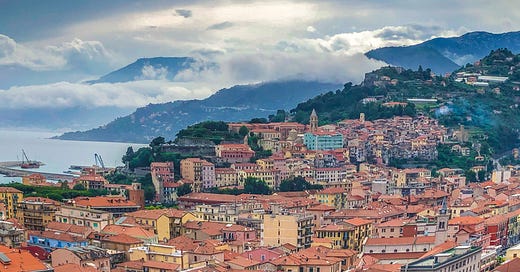



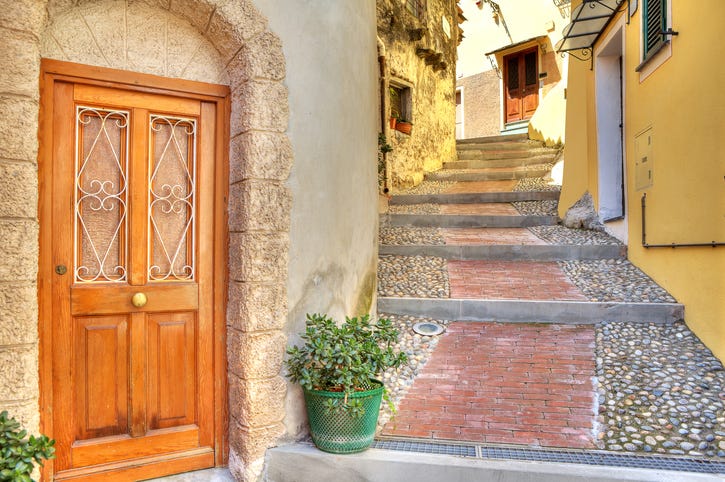
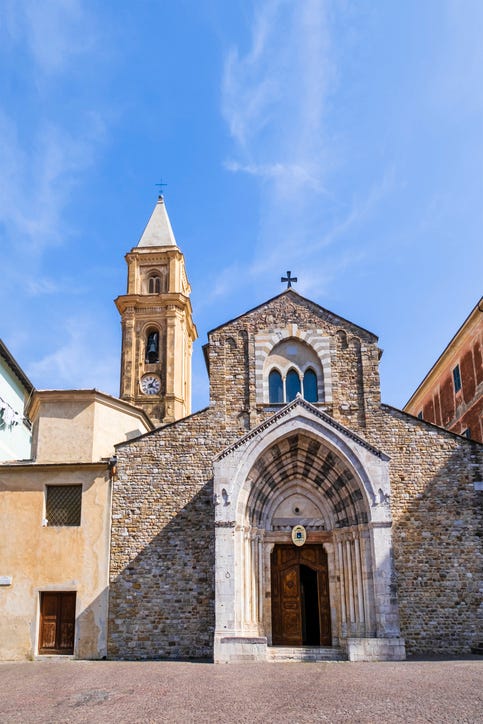
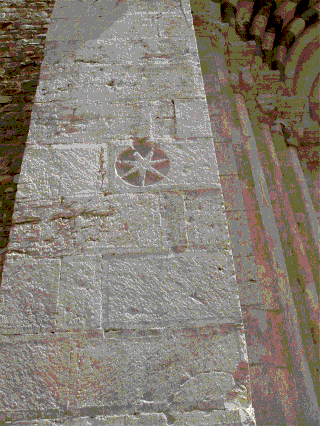
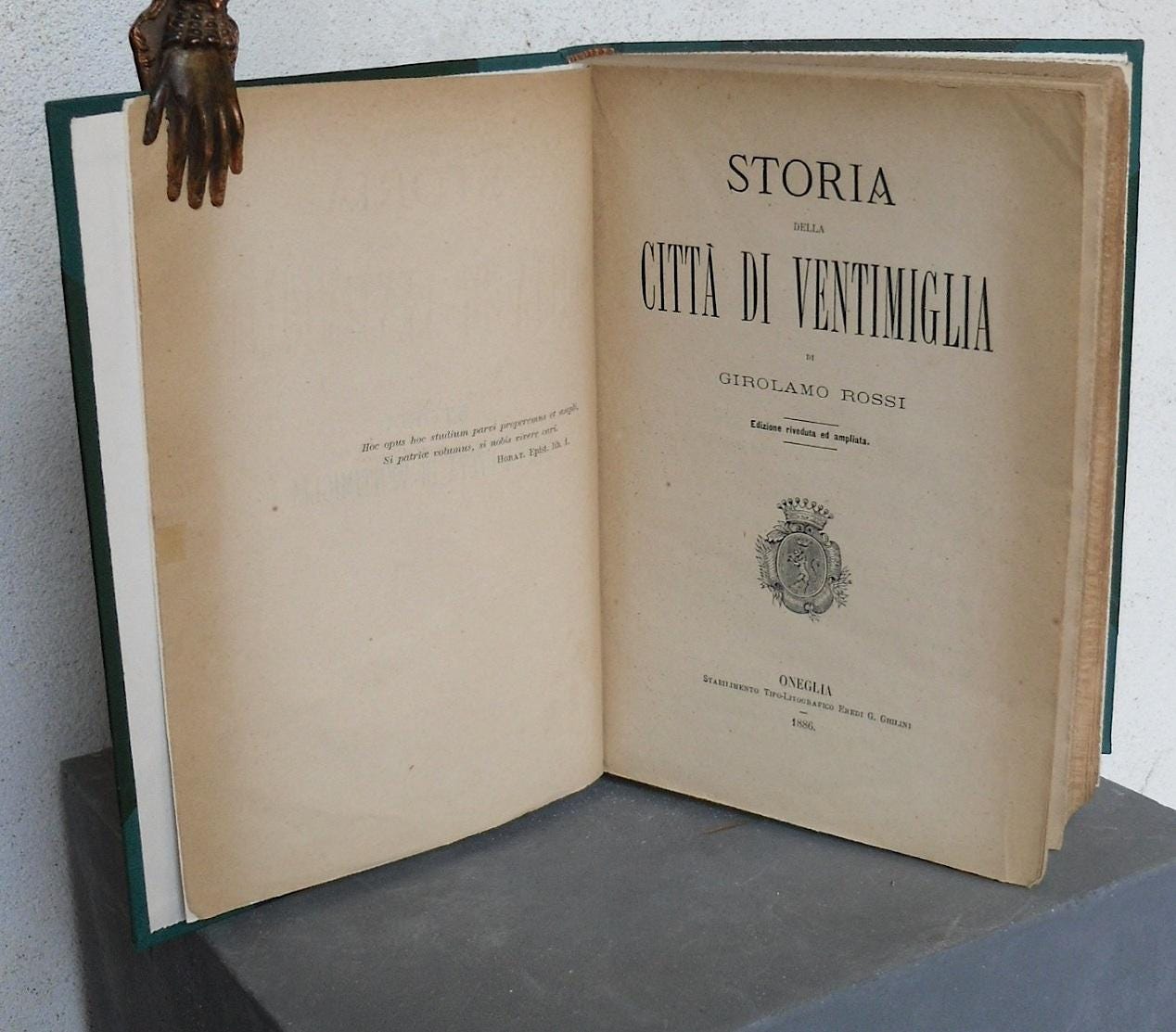
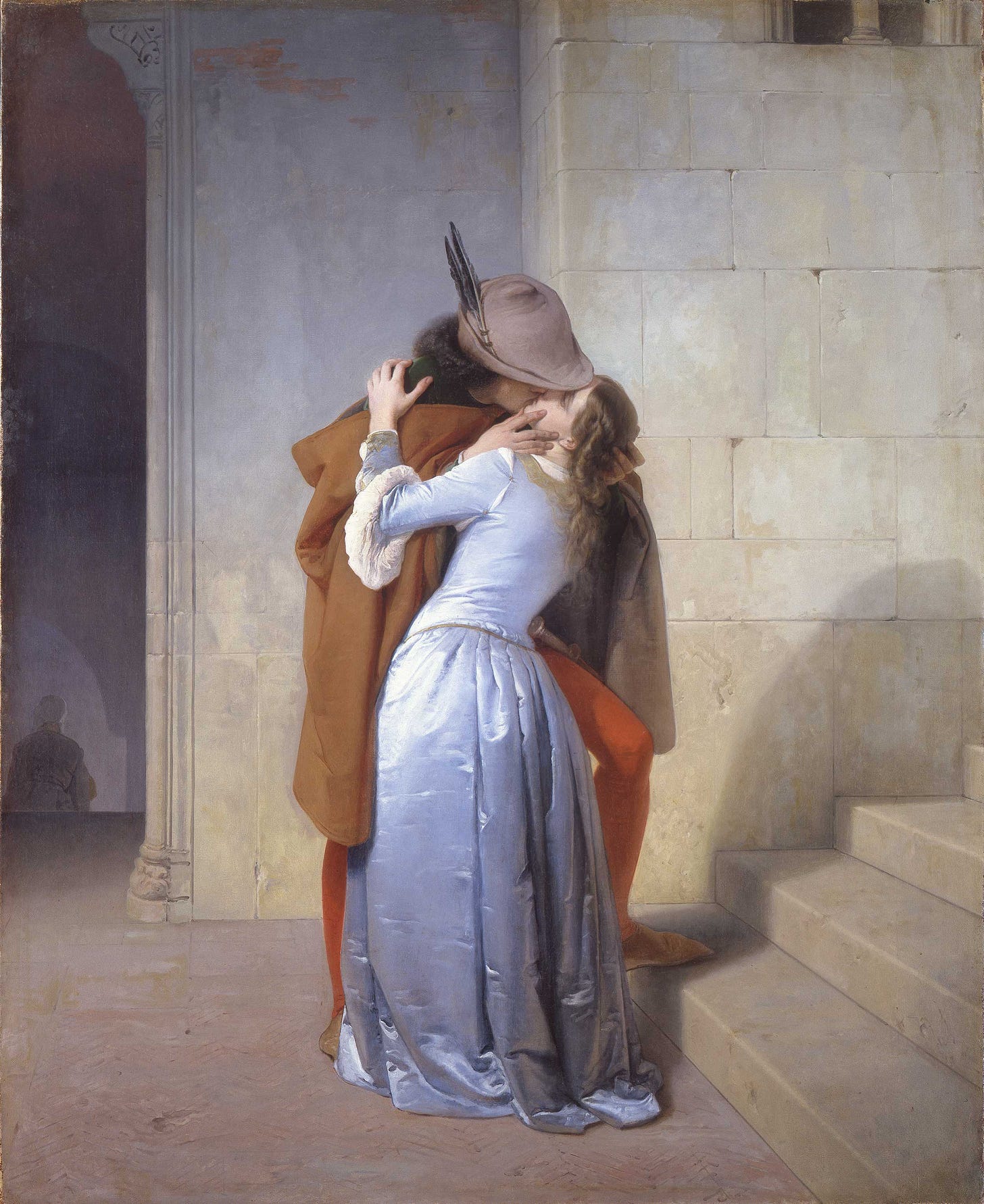
Glad to know others who love
researching in old vintage books.ihave several about the Liguria region including a illustrated “Portali Ligure”